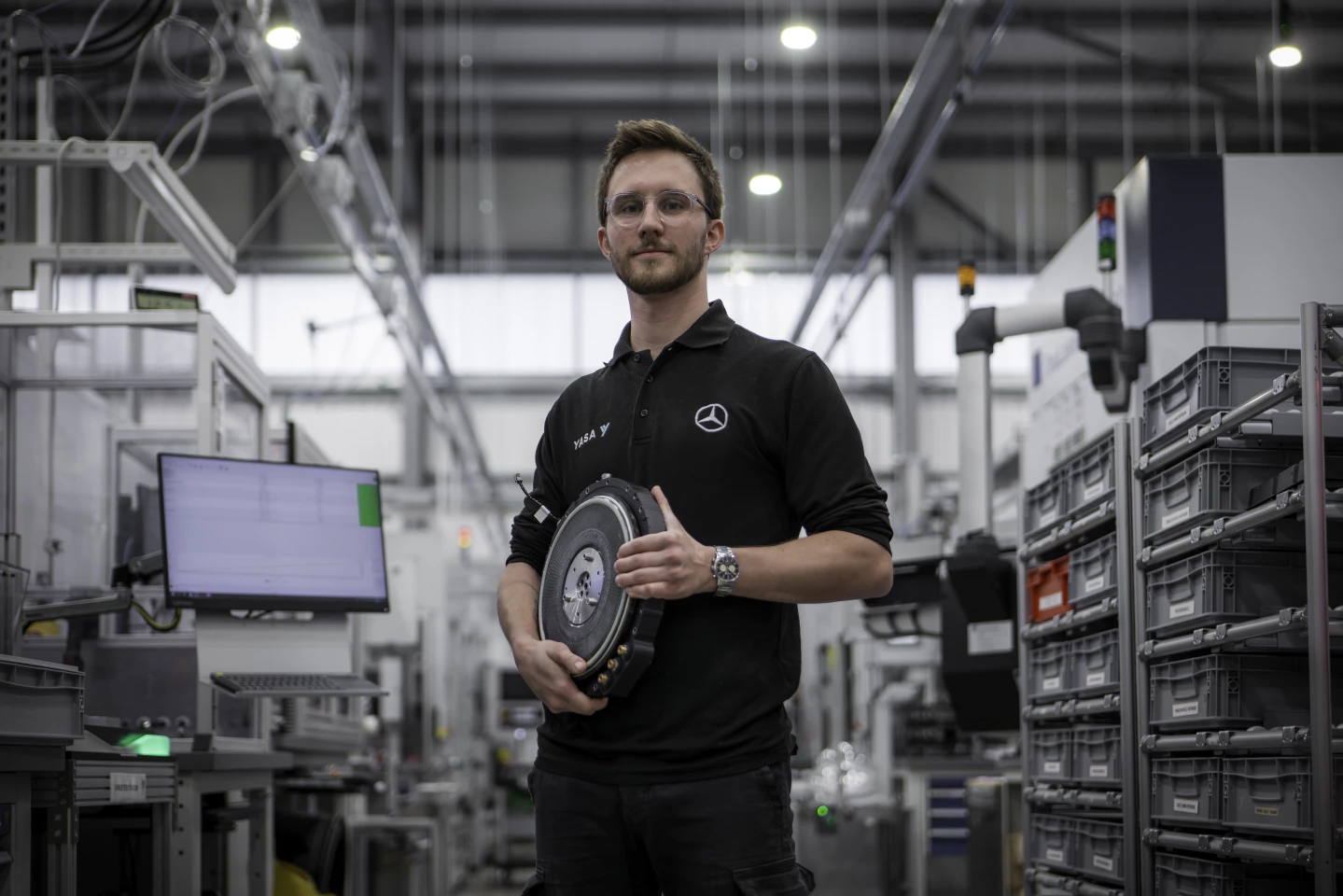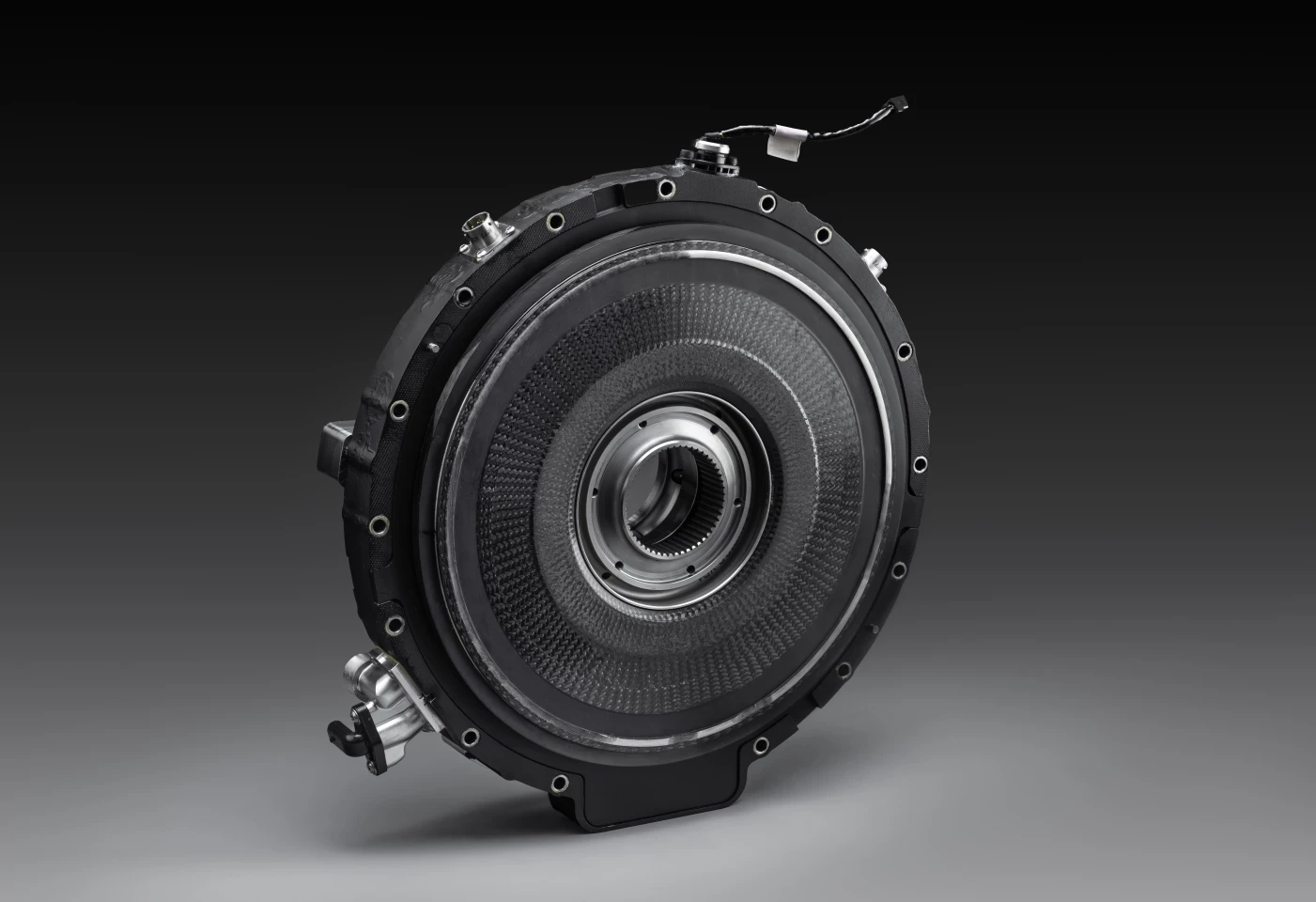The axial flux electric motor pioneers at YASA are at it again. Just three months after sending tremors through the electric motor market with an unofficial world-record power density that absolutely trounced the nearest competitor, it's bested its own staggering 42-kW/kg mark. YASA's latest slimline automotive-grade e-machine is both lighter in weight and significantly more powerful than the last iteration, rewriting the power-density charts all over again.
YASA announced its latest prototype motor breakthrough this week, and this time around, it's managed to shave off close to half an ounce of weight while boosting power by over 33%.
More precisely, YASA's latest prototype axial flux motor weighs in at 12.7 kg (28 lb) while firing out a peak power of 750 kW (1,006 hp), pinning down a new unofficial world record power density of 59 kW/kg, a full 40% more than the already massive figure it achieved just a few calendar flips ago.

"To achieve a 750 kW short-term peak rating and a density of 59 kW/kg is a major validation of our next-generation axial flux technology," said YASA founder and CTO Tim Woolmer. "And this isn’t a concept on a screen – it’s running, right now, on the dynos. We’ve built an electric motor that’s significantly more power-dense than anything before it – all with scalable materials and processes."
To put a finer point on just what YASA has accomplished over the past few months, the company said in July its 42-kW/kg record was almost double the previous record, which we surmised to be Evolito's 28-kW/kg D250 motor, the most power-dense electric motor we had previously covered.
And Evolito itself is an aerospace spinoff with roots back to YASA's axial flux tech.
We also recently happened upon an interesting case study about the 28-kg (62-lb) SPX177 radial flux electric motor created by fellow British e-machine specialist Helix. Developed within Helix's high-performance X Division, the SPX177 was prepared as part of a hypercar project and tested to a peak of 711 kW (954 hp). Like any good set of engineers and tech execs, the Helix folks believed they could push it further after achieving those results, but just using the 711-kW figure actually achieved, that prototype motor edges close to the Evolito D250 in packing a power density of 25.4 kW/kg.
YASA now bests both those units by more than double.
Other power-dense electric motors we've looked at in recent months and years are still back in their teenage years in terms of kW/kg. The 15.8-kW/kg Donut Labs automotive hub motor that made some serious noise earlier this year is the most recent example, while the 13.4-kW/kg H3X HPDM-250 aerospace motor and 13.3-kW/kg Equipmake HPM-400 aerospace/marine motor debuted in 2024 and 2023, respectively, are two others that come to mind.

As for what the YASA prototype motor can achieve in continuous operation, YASA's team estimates that figure between 350 and 400 kW (469 and 536 hp), which gives it a 27.6 kW/kg continuous power density that lands greater than most motors' peak power densities. In fact, it's double a couple of those aforementioned figures above.
But who cares about "unofficial" motor-to-motor kW/kg competitions if none of those units are actually featured in cars, boats, eVTOLs or mobility vessels of any size or form we can buy or use on a regular basis? When will we actually see YASA's beautiful electromagnetic engineering power its way into the local car dealership? Or even in a hypercar touring the international auto show circuit?
It appears not very soon. We prodded and pleaded (or politely asked for a few details, anyway), but YASA was not ready to commit to even a loose timeframe as to when this prototype series might materialize its way to production. The one promising thing it has said repeatedly is that the motor architecture is fully scalable and free from exotic materials, so it should be a viable source of power for something a little humbler than just Mercedes-AMG's next world record-targeting hypercar project.
In theory, some day. YASA remains squarely focused on the performance end of the market for now.
"This motor will bring game-changing technology to the high-performance automotive sector," Woolmer summed up.
But the fact that it is being developed as a scalable platform with manufacturability in mind puts it ahead of something like the Helix SPX177, which was the result of a more F1-like development program in which ultimate performance was the only goal, with unit cost and manufacturability distant afterthoughts.
Clearly YASA is competing against itself at this point in time, and it's playing to win. It plans to continue releasing updates as it matures its axial flux tech, achieves major targets, and resets benchmarks for the entire industry. We'll keep both eyes on it.
Source: YASA






